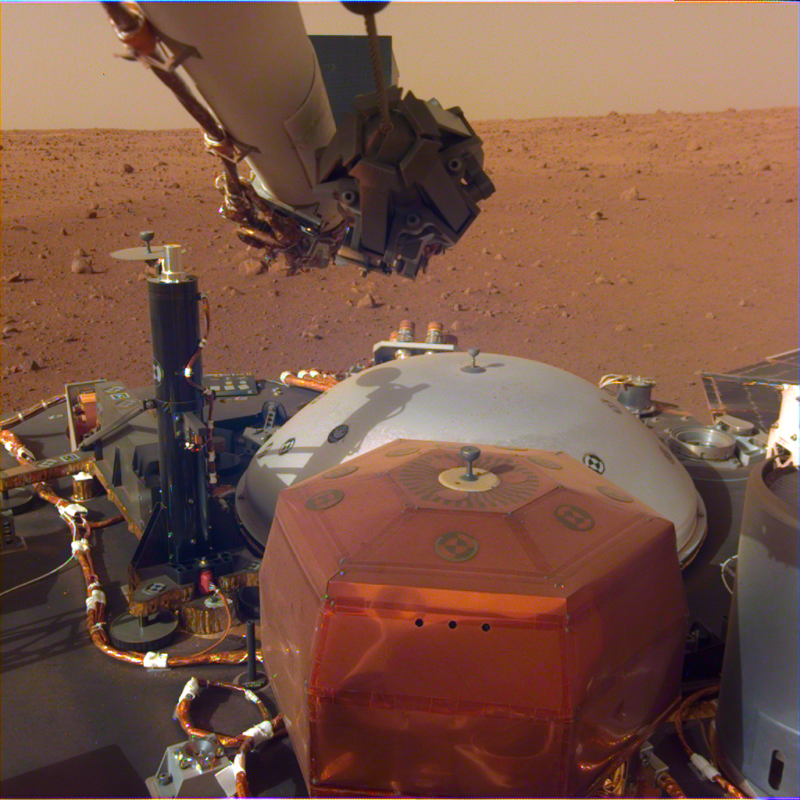Marsquakes and ancient magnetic fields: InSight’s first data

Enlarge / A self portrait of InSight's hardware on the Red Planet. (credit: NASA/JPL-Caltech)
While the rovers seem to get most of the attention, they're just one part of a suite of instruments we're using to understand the history and geology of Mars. We have an orbiting telescope pointed down toward its surface and an orbiting atmospheric observatory trying to help us understand why Mars is so sparse. And, for nearly a year, we have had a seismograph, weather observatory, and magnetic sensor parked at Mars' equator.
The InSight mission (from the bacronym "Interior exploration using Seismic Investigations, Geodesy, and Heat Transport") is a stationary lander and contains a suite of instruments designed to give us a clear picture of Mars' workings. It landed toward the end of 2018 and has had instruments in operation since early last year. Now, in a large series of papers, the teams behind the lander's hardware have analyzed the first data to come back from InSight, which includes the first recordings of marsquakes, along with some details on the local magnetic field.
At the equatorInSight landed at a region of Mars called Elysium Planiti, a region sandwiched between the southern highlands and the second largest volcano on the planet, Elysium. Billions of years ago, that volcano left large rock deposits that spread across parts of Elysium Planitia. But to the east, there's additional volcanic terrain that appears to have formed as little as 10 million years ago and terrain that's associated with the flow of liquid water.
Read 16 remaining paragraphs | Comments